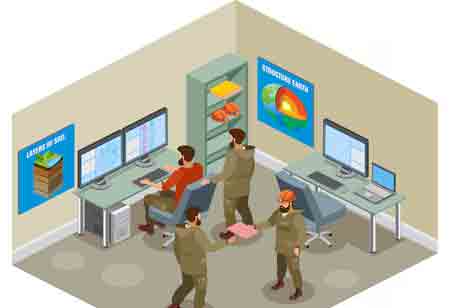THANK YOU FOR SUBSCRIBING
Be first to read the latest tech news, Industry Leader's Insights, and CIO interviews of medium and large enterprises exclusively from Gov CIO Outlook
THANK YOU FOR SUBSCRIBING

By
Government CIO Outlook | Tuesday, October 08, 2024
Stay ahead of the industry with exclusive feature stories on the top companies, expert insights and the latest news delivered straight to your inbox. Subscribe today.
Serious organized criminal groups and state-sponsored opponents use the internet worldwide, buried behind layers of obscurity that make identification nearly tricky.
Fremont, CA: Data is a tool for helping people, not a goal in it. To put it another way, data collection for a specific business goal generates insight, such as by delivering the appropriate information to the right people at the correct time. Given their relevance in our daily lives, police, security, and justice institutions must excel at acquiring, analyzing, and managing data and reconciling civil rights with the need to prevent and detect crime. The benefits of greater data utilization are obvious: police personnel can be more successful on patrol, reach residents in crisis faster, assist pedestrians where they need it, and arrest criminals through enhanced imagery and CCTV.
If the difficulties and opportunities are handled, 2024 will be a watershed moment for police, security, and justice institutions. There must be a fundamental transformation in how police, security, and judicial institutions approach and use data. Here are two significant aspects to consider:
Security and Safety in the Virtual World
Virtual worlds are uncharted areas for police and judicial institutions. Cyberspace is open and can be anonymous: there is no assurance of identification, personality (due to the prevalence of automated bots), or purpose. The existence of a crime, as well as jurisdictions, might be uncertain. Harassment, abuse, grooming, identity theft, fraud, extortion, viruses, and hacking are examples of possible risks in the growing metaverse (interconnected, permanent virtual worlds). Serious organized criminal groups and state-sponsored opponents use the internet worldwide, buried behind layers of obscurity that make identification nearly tricky. How can we keep people safe in this environment? One approach may be for international law enforcement partnerships to share the responsibility of cyberspace security and agree on thresholds for involvement.
Asymmetric Access to Data
People create data almost every time they use digital media, take public transportation, visit a public facility, or stroll along a street with CCTV coverage. The majority of data that may be valuable for public safety is not under the control of police or security institutions; instead, it exists elsewhere. Private corporations, frequently situated overseas, store a large amount of data under terms and conditions that few people understand. People have some control over their data, such as what is on their mobile phones and smart doorbells. They may share it locally with crime prevention neighborhood organizations, in informal social networks, or via social media. 'Open source' information 'in the wild' may be a valuable source of intelligence; a new business sector has formed to collect and analyze open-source material. While law enforcement organizations have no interest in blanket monitoring, which would be unconstitutional and excessive, they need to identify methods to improve access and use of accessible data for particular police and justice reasons, maybe through enhanced collaboration with the private sector.
I agree We use cookies on this website to enhance your user experience. By clicking any link on this page you are giving your consent for us to set cookies. More info

However, if you would like to share the information in this article, you may use the link below:
www.govciooutlookeurope.com/news/top-2-public-security-trends-nid-2270.html



